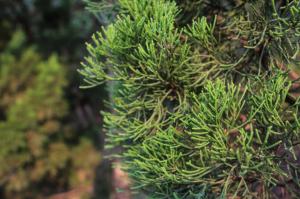Why is Tomato Plant Leaves Turning Yellow?
Tomatoes are a favorite crop among gardeners due to their delicious flavor and versatility in cooking. However, yellowing leaves on a tomato plant can be a sign of a problem. Understanding why tomato plant leaves are turning yellow is crucial to addressing the issue and preventing further damage to the plant.
Lack of Nutrients
One of the most common reasons why tomato plant leaves turn yellow is due to a lack of nutrients in the soil. Tomatoes require a balanced blend of macronutrients like nitrogen, phosphorus, and potassium as well as micronutrients like iron and magnesium to grow properly. If the soil lacks any of these nutrients, it can cause the leaves to turn yellow.
To prevent yellowing due to nutrient deficiencies, it is recommended to use a balanced fertilizer during the growing season. Additionally, it is important to test the soil regularly to ensure that it has the proper nutrient content for your tomato plants.
Weather Conditions
Weather conditions such as excessive heat, cold temperatures, and high humidity can also cause yellowing of tomato plant leaves. Extreme heat, for example, can cause the leaves to wilt and turn yellow due to dehydration. Cold temperatures can damage the plant's tissues, leading to yellowing leaves. High humidity can promote the growth of fungal infections, which can also cause the leaves to yellow.
To prevent yellowing due to weather conditions, it is important to plant your tomatoes in an optimal location that receives the right amount of sunlight and protection from excessive heat, cold, and humidity. You can also apply fungicides and other treatments to prevent and control fungal infections.
Pests and Diseases
Pests and diseases can also cause yellowing of tomato plant leaves. Common tomato pests, such as aphids, spider mites, and whiteflies, can suck the sap from the leaves and cause yellowing. Diseases such as bacterial spot or fusarium wilt can also lead to yellowing of the leaves.
To prevent yellowing due to pests and diseases, it is important to practice good crop rotation, removing infected or infested plants and soil in the fall. You can also use insecticidal soaps or neem oil to control pests or apply fungicides to control diseases.
Conclusion
Understanding the reasons why tomato plant leaves turn yellow is essential for maintaining a healthy and productive crop. By addressing nutrient deficiencies, weather conditions, pests, and diseases promptly, you can prevent further damage to your plants and ensure a bountiful harvest of delicious tomatoes.

 how many times do yo...
how many times do yo... how many planted tre...
how many planted tre... how many pine trees ...
how many pine trees ... how many pecan trees...
how many pecan trees... how many plants comp...
how many plants comp... how many plants can ...
how many plants can ... how many plants and ...
how many plants and ... how many pepper plan...
how many pepper plan...





























